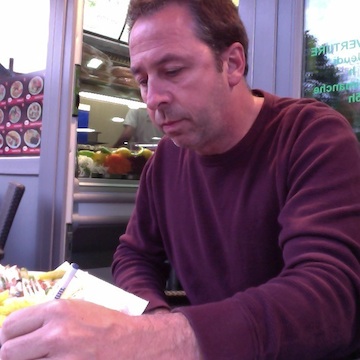
I recently spoke with Paul about his views on UX strategy, his plans for UX STRAT 2014, and his UX STRAT Masterclasses.
Pabini: UX strategy means different things to different people. How do you define UX strategy?
Paul: Let’s first take that question up a level: The definition of a strategy is a plan of action whose purpose is to achieve a major aim. A UX strategy, then, applies this approach to UX design. It’s not about execution and tactics. UX strategists use data from customer and market research, UX research, and analytics to produce a game plan, or North Star, for their UX, CX, product, or service design efforts.
Pabini: Some people believe that the role of User Experience on projects is purely tactical. What’s your response to this?
Paul: I think a lot of this banter is simply flame bait—a way for pundits to stay in the limelight. That’s part of the game. As people who know me will tell you, I am thick skinned. However, a more sinister reason that some people might attack UX strategy is that they’ve earned a considerable amount of money constructing and selling methodologies that marginalize User Experience into purely tactical activities. They don’t want UX professionals to rise up out of their assigned quarters to try to influence the future of experience design. Events like the UX STRAT conferences and Masterclasses encourage UX professionals to emerge from the tactical roles to which they have been relegated in some organizations and to develop a strategic approach to experience design in their companies and for their clients.
Pabini: How is UX strategy evolving? Do you think the focus of the profession has changed or expanded in any way? Are more companies hiring UX Strategists? What kinds of companies?
Paul: I’ve tracked mentions of UX strategy for several years. I’m seeing a steeply rising, early-stage curve for UX Strategy jobs, year over year. I also review the role and company of every person who asks to join the UX Strategy and Planning group on LinkedIn, to make sure that the group is relevant to them and that they can make valuable contributions to it. The number of people with UX Strategy in their job title has increased dramatically in 2014. But realities emerge long before role definitions exist. We see definitions of new roles much later—once the innovation curve has flattened and the reality that has been emerging becomes codified by those who are interested in such things. I don't think we’re at that stage yet for UX strategy.
In fact, I think the terminology that we use to describe what we now call UX strategy could easily change in the next year or two, so UX STRAT might become something like XD STRAT or EXP STRAT. But, regardless of the vagaries of the terminology that we use, it’s clear that the trend to create strategies that leverage technology and experience design to gain long-term competitive advantage is growing rapidly and is here to stay for the foreseeable future.
Pabini: As a UX strategy consultant, what kinds of projects do you typically work on? At what stages do you get brought onto projects? What stakeholders typically bring you in as a consultant—C-level leaders, VPs, mid-level managers, Product Managers?
Paul: In the past few years, most of my engagements involve large corporate clients who want my team to produce a UX strategy foundation for them, with a roadmap that extends several years into the future. This kind of project often involves working in partnership with a design agency such as ehouse studio in Charleston or Digital Leadership in Europe. Post UX STRAT 2013, many companies have also asked me to help them transform their internal UX design services to focus more on strategy and less on production. The people who contact me for this type of engagement are generally Director-level and above.
Pabini: What should UX professionals do to move their career in the direction of UX strategy?
Paul: My advice to them is to read business strategy texts and cases, make the effort to understand your company’s or clients’ business model and strategy, use that strategy as the foundation of your work, and take the time to develop a formal, multi-year UX strategy. And, of course, attend UX STRAT events to keep up on the latest advances in UX strategy!
Pabini: What did you learn from your experience putting on UX STRAT 2013, and what changes have you made to the conference as a result of your learnings?
Paul: Well, UX STRAT 2013 was the first event that I’d ever organized, so my learning curve was nearly vertical! I guess the biggest thing that I learned was that, as the organizer, I need to channel most of my energy into the very few things that differentiate UX STRAT from all the other UX events, then trust my staff to manage other things that, while important, are not key differentiators. The two areas that I’ve focused on all this year are
- securing the very best experts on UX, CX, product, and service design strategy that I could find to give presentations and workshops at UX STRAT 2014
- working with my team to visualize the attendee experience at the event with great care and doing everything that we can to help people network with their peers in a meaningful way
Everything else is icing on the cake. You’re not going to find a program like ours anywhere else—even at events that were created specifically to copy UX STRAT.
